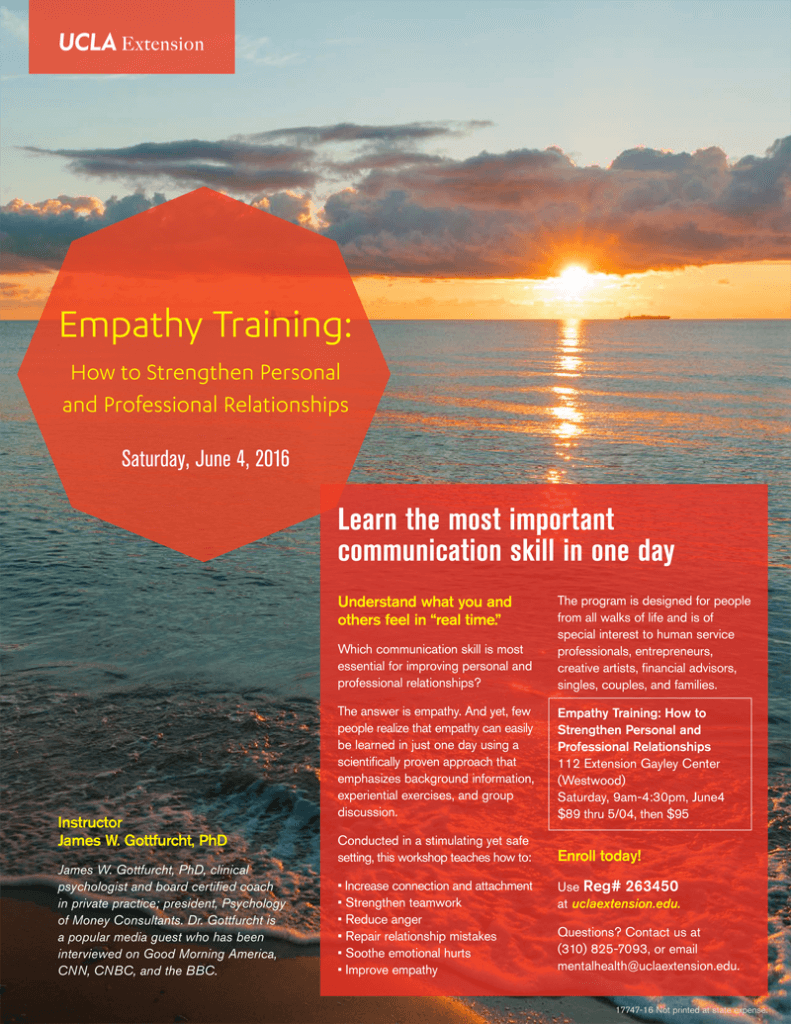



What is This Man Feeling?
When we began doing empathy training in 1974, many people didn’t quite know the meaning of empathy. We view it to be: experiencing another person’s inner world, understanding it and mirroring back its essence in a way the person feels “seen” or “heard.”
Scientific studies on empathy reveal nonverbal communication is more important in communicating peoples’ feelings than verbal communication. Since nonverbal feelings are communicated more subconsciously, they are more revealing and less prone to hiding or faking. The most significant nonverbal component of a person’s feelings is revealed by facial expression. Voice tone, volume and pacing; touch; gestures; body posture and movements are also important nonverbal expressions.
Let’s assess your nonverbal empathy by showing an image of a man’s face and gestures. What do you sense are his most specific feelings? We’ll share what we sense in the next blog.

How would you like to improve your empathy in a one day empathy training workshop at UCLA Extension with Dr. Gottfurcht? Click here
This new UCLA program includes the latest training tools, insights and exercises from his psychotherapy, coaching and Psychology of Money practices.
Experiential exercises, instructor briefings and discussions can show you how to:
How Do We Really Know What He is Feeling?
To review the prior blog, it showed this man’s facial expression and gestures:

Based upon looking at him, what feelings do you sense he is experiencing? One way to discover this is to check in with yourself, and see what you experienced when you looked at his image. Another way is to go with your first thoughts or intuition. What first comes into your gut, heart and/or mind?
At a general level, many people experience him to be happy. Although it is likely he feels happy, we sense more precisely he is experiencing several other feelings. He seems to feel surprised, excited and/or thrilled. Our sense is that he has just received some wonderful news, and he can barely believe it. Of course, we won’t know what he is actually feeling until we hear his response to what we say. One obvious way to find out what he’s feeling would be to ask him. Another more subtle way would be to mirror back to him our sense of his feelings by saying something like: “You look like you feel surprised, excited and really thrilled.” Let’s assume he said: “Yes! I got the job, and the salary is higher than I dreamed. I can’t believe it! I am thrilled because now my fiancé and I can set our wedding date.”
This response would tell us we captured the essence of his feelings, he knew we were listening to his inner experience and understood it in the present moment. He would have felt “seen,” “heard” or “understood.” That’s why he spontaneously shared more deeply.
We would know this because he enthusiastically said “Yes!” to our response. We would also know because he opened up further and told us something more personal (i.e. now we can set our wedding date). In contrast, if he slowed down his sharing, changed the topic or got upset, we would know our attempt at empathy missed the mark. Remember, the key to telling the empathy level of a response is determined by the speaker’s spontaneous response to what we
How would you like to improve your empathy in a one day empathy training workshop at UCLA Extension with Dr. Gottfurcht? Click here
This new UCLA program includes the latest training tools, insights and exercises from his psychotherapy, coaching and Psychology of Money practices.
Experiential exercises, instructor briefings and discussions can show you how to:
Search for

Recent Posts